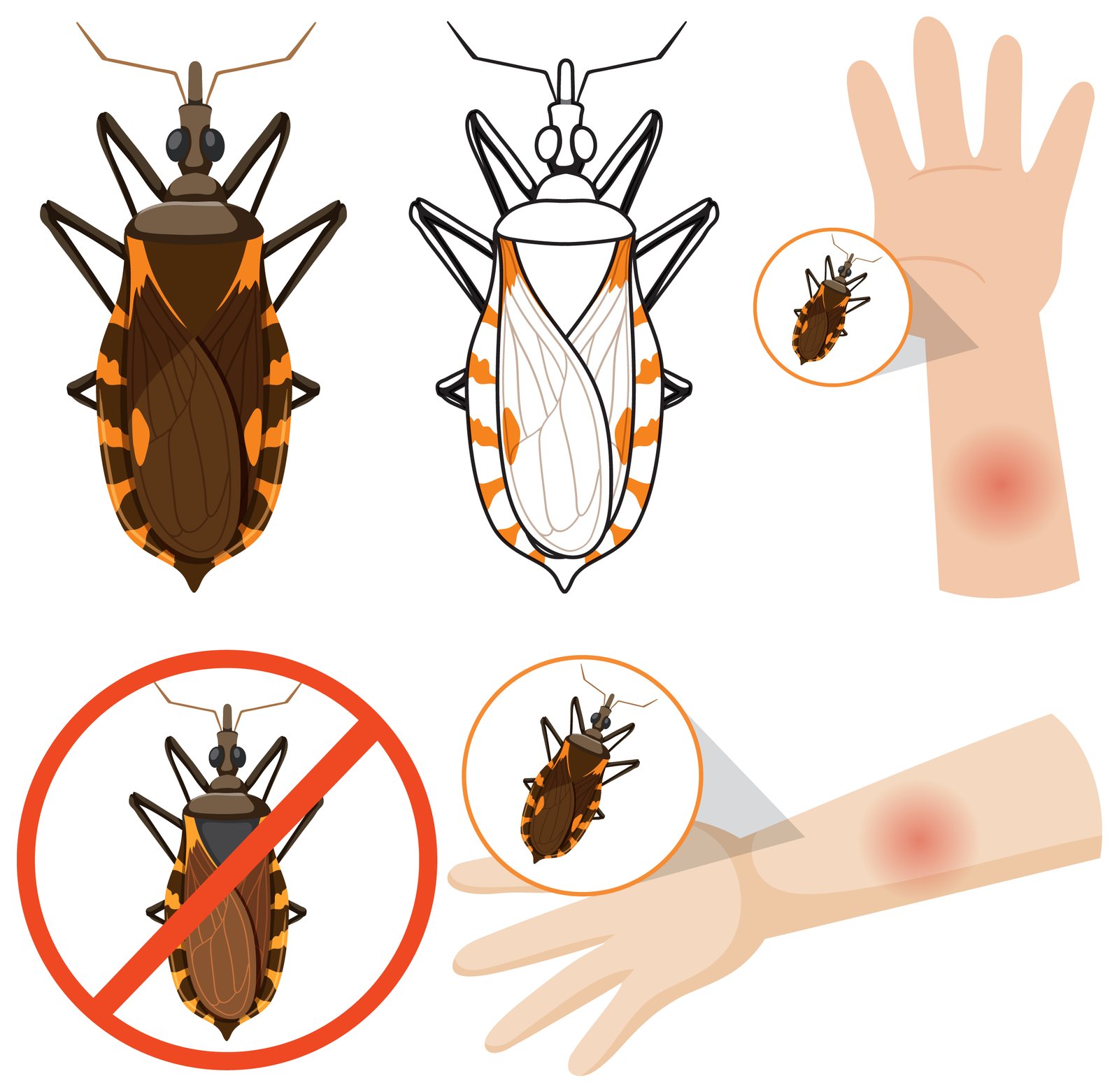
Lyme disease, caused by the bacterium Borrelia burgdorferi and transmitted through tick bites, is a prominent tick-borne illness affecting humans, particularly in wooded and grassy areas. Prevention of Lyme disease is crucial, as it can lead to serious health issues if left untreated. This article provides a comprehensive overview of Lyme disease, focusing on the prevention of tick bites, early symptoms, and the necessary steps to mitigate the risk of infection.
Understanding Lyme Disease
Lyme disease is an infection resulting from the bite of an infected tick, most commonly the deer tick (Ixodes species). The disease manifests a range of symptoms, which can progress from mild to severe if not addressed promptly.
Lyme Disease Symptoms
The initial symptoms of Lyme disease often include a distinct circular rash (erythema migrans), fever, fatigue, headache, and muscle and joint aches. If untreated, the infection can spread to the joints, heart, and nervous system, leading to more severe health problems.
The Lifecycle of Lyme-Carrying Ticks
Ticks go through four life stages: egg, larva, nymph, and adult. The risk of human infection is greatest during the nymph stage due to their small size and active feeding during warmer months. Understanding the tick lifecycle and their active periods can aid in better prevention strategies.
Tick Bite Prevention
Preventing tick bites is the most effective method to avoid Lyme disease. Various strategies can be employed to reduce the risk of tick encounters, especially in areas where Lyme disease is prevalent.
Personal Protective Measures
- Use of Insect Repellents: Apply EPA-registered insect repellents containing DEET, picaridin, or other effective ingredients on exposed skin and clothing.
- Wear Protective Clothing: Dress in long sleeves, long pants tucked into socks, and closed shoes to minimize skin exposure.
- Choose Light-Colored Clothing: This makes it easier to spot ticks and remove them before they attach.
Environmental Controls
- Maintain Yards: Keep lawns mowed and remove leaf litter and tall grasses where ticks are commonly found.
- Use Tick Control Products: In high-risk areas, consider applying acaricides or other tick control products to reduce tick populations.
Tick Checks and Showering
After being in tick-prone areas, thoroughly check your body for ticks, focusing on warm, moist areas where ticks prefer to attach. Showering within two hours of exposure can also help wash off unattached ticks and provides an opportunity to conduct a tick check.
Lyme Disease Prophylaxis
If a tick bite occurs, prompt removal of the tick is crucial in preventing Lyme disease transmission, as the tick typically needs to be attached for 36 to 48 hours or more before the bacteria can be transmitted.
Tick Removal Techniques
Using fine-tipped tweezers, grasp the tick as close to the skin’s surface as possible, pulling upward with steady, even pressure. After removal, clean the bite area and your hands with rubbing alcohol or soap and water.
Post-Bite Monitoring and Care
Monitor the bite site for signs of a rash or other symptoms of Lyme disease for several weeks after the tick bite. If symptoms develop, seek medical attention promptly for evaluation and possible treatment.
Treatment for Lyme Disease
Early treatment of Lyme disease typically involves antibiotics and is most effective when started early in the course of the disease.
Antibiotic Treatment
Antibiotics such as doxycycline, amoxicillin, or cefuroxime axetil are commonly used to treat Lyme disease, with the treatment duration ranging from two to four weeks, depending on the stage of the disease.
Chronic Lyme Disease Management
In cases where symptoms persist post-treatment, often called post-treatment Lyme disease syndrome (PTLDS), a more extended management approach may be necessary, focusing on symptom relief and quality of life improvement.
Public Health Action and Awareness
Raising public awareness about Lyme disease and tick-bite prevention is essential, especially in regions where the disease is endemic.
Educational Campaigns
Health departments and organizations can implement campaigns to educate the public on the risks of tick bites, proper tick removal techniques, and the importance of early treatment for Lyme disease.
Community-Based Prevention Programs
These programs can include tick surveillance, control efforts, and the promotion of landscaping practices that reduce tick habitats in public and private spaces.
Advancements in Lyme Disease Diagnostics
Emerging technologies and research are enhancing the diagnostic process for Lyme disease, leading to quicker and more accurate detection. Advanced laboratory tests, including polymerase chain reaction (PCR) and improved serological testing, can detect the presence of Borrelia burgdorferi bacteria or antibodies more effectively. Early and accurate diagnosis is crucial for the timely initiation of treatment, reducing the risk of long-term complications. These advancements in diagnostics are a key component of comprehensive Lyme disease prevention and management strategies.
Integrating Lyme Disease Education in Outdoor Recreational Activities
Given that tick exposure often occurs during outdoor activities, integrating Lyme disease education into recreational programs can significantly aid in prevention. Providing information on tick avoidance, proper clothing, and tick check procedures to individuals participating in camping, hiking, and other outdoor activities helps raise awareness and equip them with the knowledge to prevent tick bites. Collaboration with parks, recreational facilities, and outdoor education programs can ensure that participants are well-informed about the risks and prevention methods associated with Lyme disease.
Policy and Legislation for Tick Control
The development of policy and legislation aimed at controlling tick populations and reducing the incidence of Lyme disease is an important aspect of public health action. This can include funding for tick management programs, research into Lyme disease prevention, and public health campaigns. Legislation may also focus on land use and environmental management practices that reduce tick habitats and, consequently, the risk of Lyme disease transmission. Effective policy and legislative measures can provide the framework and resources needed to implement large-scale prevention and control strategies for Lyme disease.
Collaboration Between Human and Veterinary Medicine
Recognizing the connection between animal health and human Lyme disease risk is vital, as pets and livestock can bring ticks into close contact with humans. Collaboration between human and veterinary medicine, known as a “One Health” approach, is crucial for effective tick management and disease prevention. Veterinarians can advise pet owners on tick prevention for animals, reducing the overall tick burden in the environment and lowering the risk of human Lyme disease transmission. This collaborative effort ensures a comprehensive approach to tick control that benefits both human and animal health.
Development of Lyme Disease Vaccines
The pursuit of a safe and effective vaccine for Lyme disease represents a promising frontier in disease prevention. Research and development efforts are focused on creating vaccines that can provide immunity to Borrelia burgdorferi or target the ticks themselves, reducing their ability to transmit the bacteria. The availability of a Lyme disease vaccine could significantly reduce the incidence of the disease, providing an additional layer of protection for individuals in high-risk areas.
Impact of Climate Change on Tick Populations
Climate change is influencing the distribution and activity of tick populations, potentially increasing the risk of Lyme disease in areas previously considered low risk. Understanding the impact of climate change on tick behavior and Lyme disease transmission is crucial for adapting and updating prevention strategies. Public health officials and researchers must monitor these trends to anticipate changes in Lyme disease risk and adjust public health strategies accordingly, ensuring that prevention efforts remain effective in the face of changing environmental conditions.
Utilizing GIS and Technology for Tick Surveillance
Geographic Information Systems (GIS) and other technological tools can enhance tick surveillance and Lyme disease risk assessment. By mapping tick populations and identifying high-risk areas, public health officials can target prevention and education efforts more effectively. This technology enables real-time monitoring of tick activity and Lyme disease incidence, facilitating timely public health responses and informing individuals about current risks in their region.
Community-Based Tick Management Programs
Implementing community-based tick management programs can significantly reduce the number of ticks in residential and recreational areas, lowering the risk of Lyme disease transmission. These programs often involve landscape modifications, the use of eco-friendly tick control methods, and public education on tick prevention. By involving local communities in tick management efforts, these programs foster collective action and responsibility for Lyme disease prevention.
Enhancing Public Awareness Through Media and Campaigns
Media campaigns and public awareness initiatives play a critical role in educating the population about Lyme disease and its prevention. Utilizing various media platforms to disseminate information on tick bite prevention, symptoms of Lyme disease, and the importance of prompt treatment can increase public knowledge and encourage proactive health behaviors. Effective communication strategies can significantly enhance the reach and impact of Lyme disease prevention efforts, ensuring that individuals are well-informed and equipped to protect themselves from tick-borne infections.
Economic Impact and Funding for Lyme Disease Prevention
Analyzing the economic impact of Lyme disease can highlight the importance of investing in prevention and control measures. The costs associated with medical treatment, lost productivity, and ongoing care for chronic Lyme disease cases underscore the need for adequate funding in public health initiatives and research. By understanding the economic burden, policymakers and healthcare organizations can allocate resources more effectively, supporting comprehensive strategies to reduce the incidence and impact of Lyme disease.
The Role of Citizen Science in Lyme Disease Monitoring
Citizen science initiatives involve the public in monitoring and reporting tick encounters, contributing valuable data to Lyme disease research. These programs can enhance the understanding of tick distribution and disease prevalence, while also educating participants about tick-borne diseases. Engaging the community through citizen science fosters a collaborative approach to Lyme disease prevention, empowering individuals to take an active role in reducing the risk of tick bites and disease transmission.
Global Trends and International Collaboration in Lyme Disease Prevention
As Lyme disease becomes an increasing concern in various parts of the world, international collaboration in research, prevention, and treatment is essential. Sharing knowledge and strategies across borders can lead to more effective approaches to managing Lyme disease globally. Understanding global trends, such as the spread of tick populations and the emergence of Lyme disease in new regions, can inform international public health strategies and foster a coordinated response to this growing health challenge.
Conclusion
Preventing Lyme disease starts with effective strategies to avoid tick bites and promptly address any ticks that become attached. Personal protective measures, environmental controls, and proper tick removal are key components of Lyme disease prevention. Understanding the symptoms of Lyme disease and seeking timely medical treatment if infection is suspected are critical steps in preventing the long-term health consequences associated with this tick-borne illness. By implementing comprehensive prevention and awareness strategies, the risk of Lyme disease can be significantly reduced, protecting public health and individual well-being.



